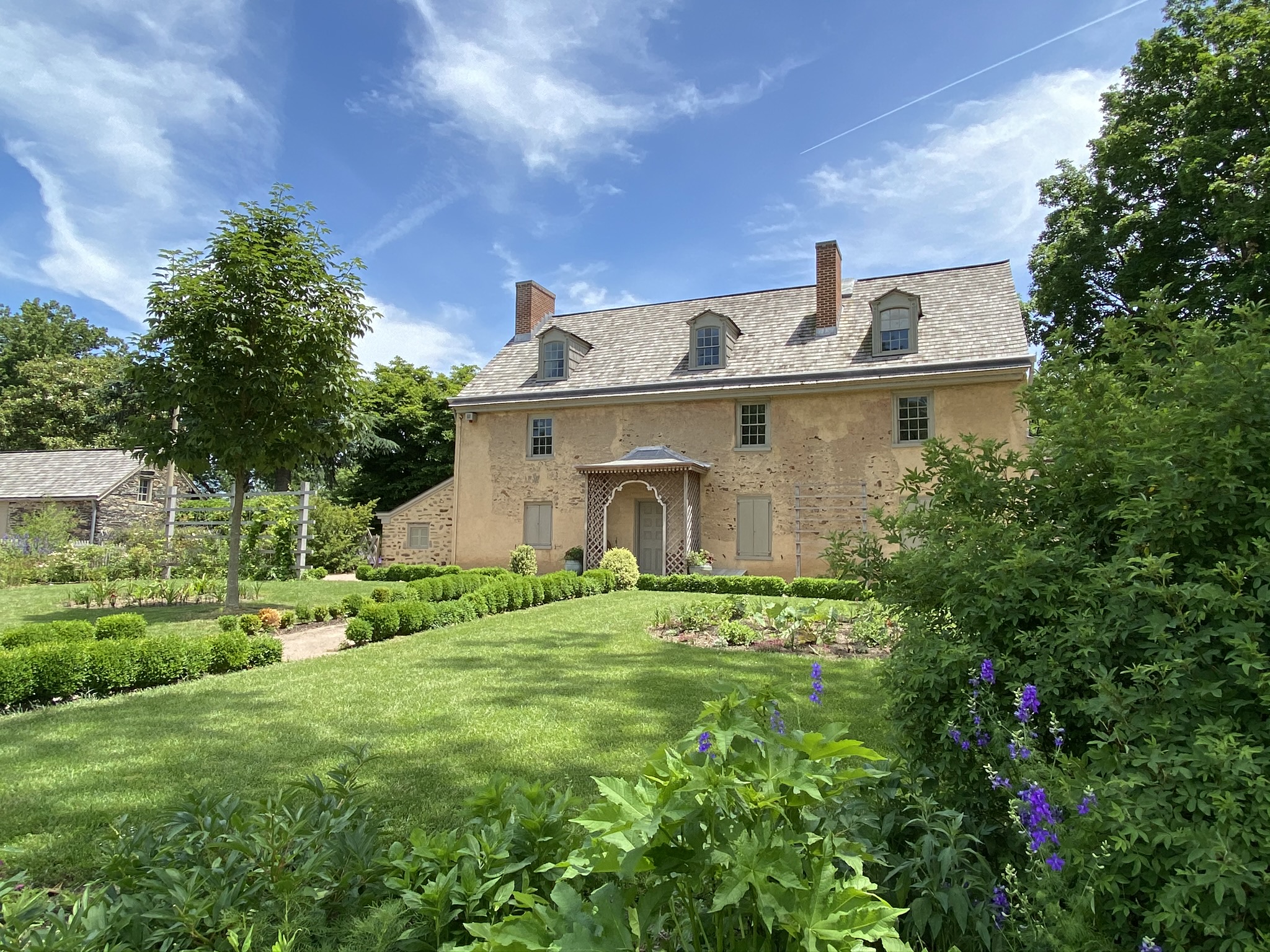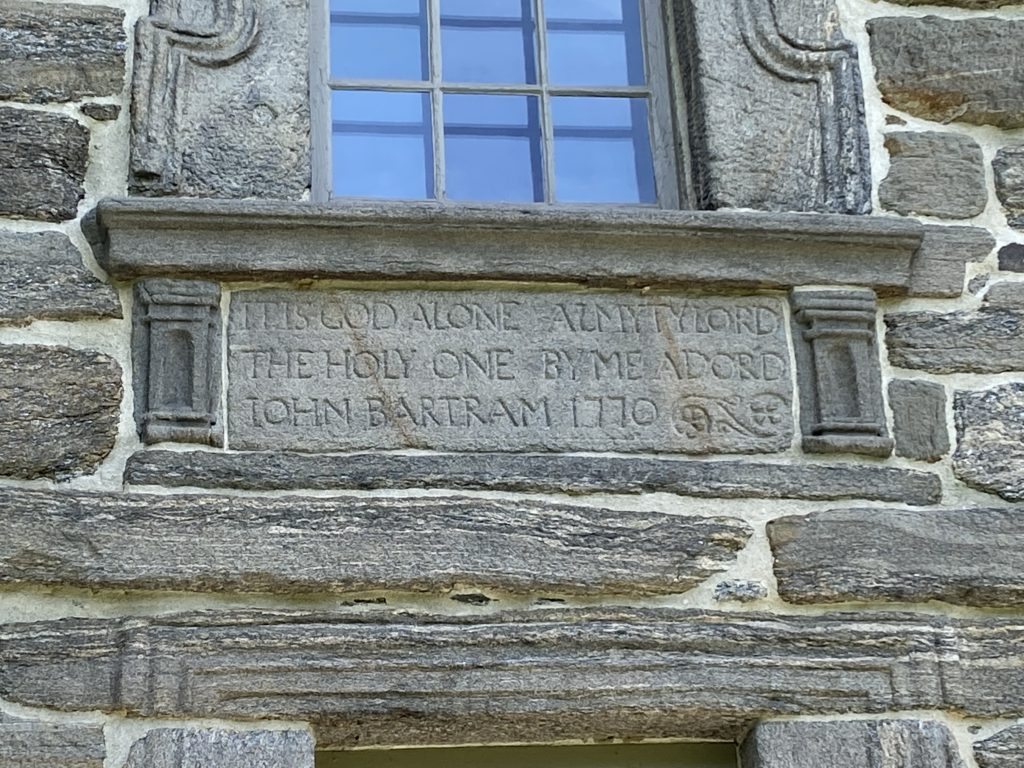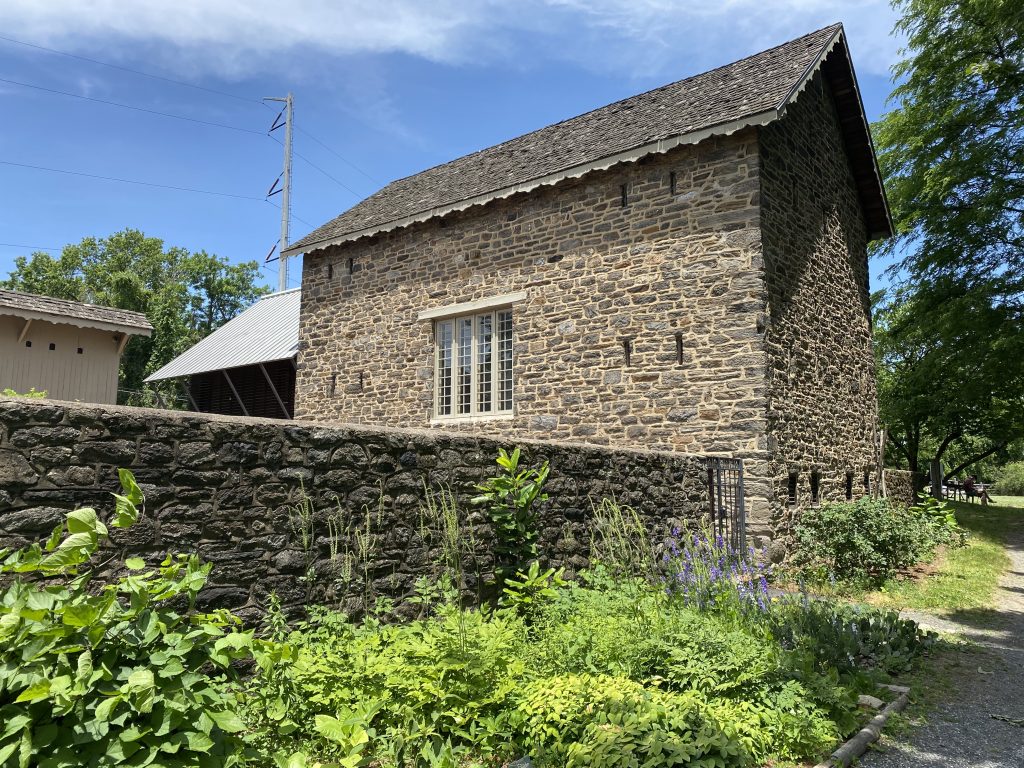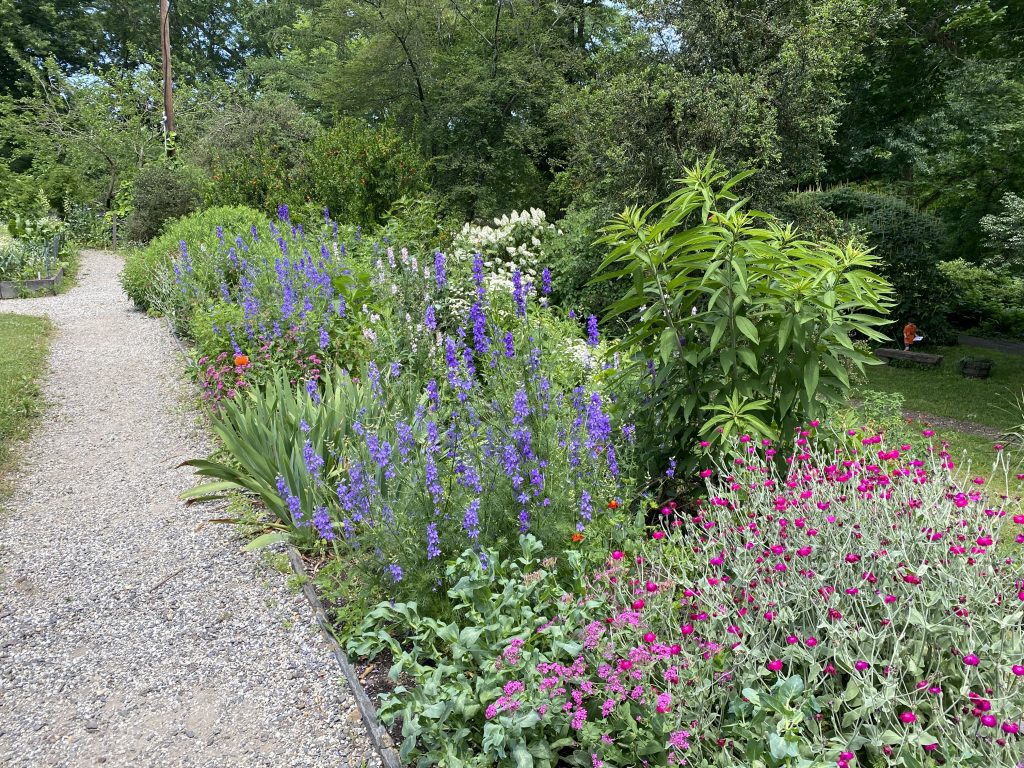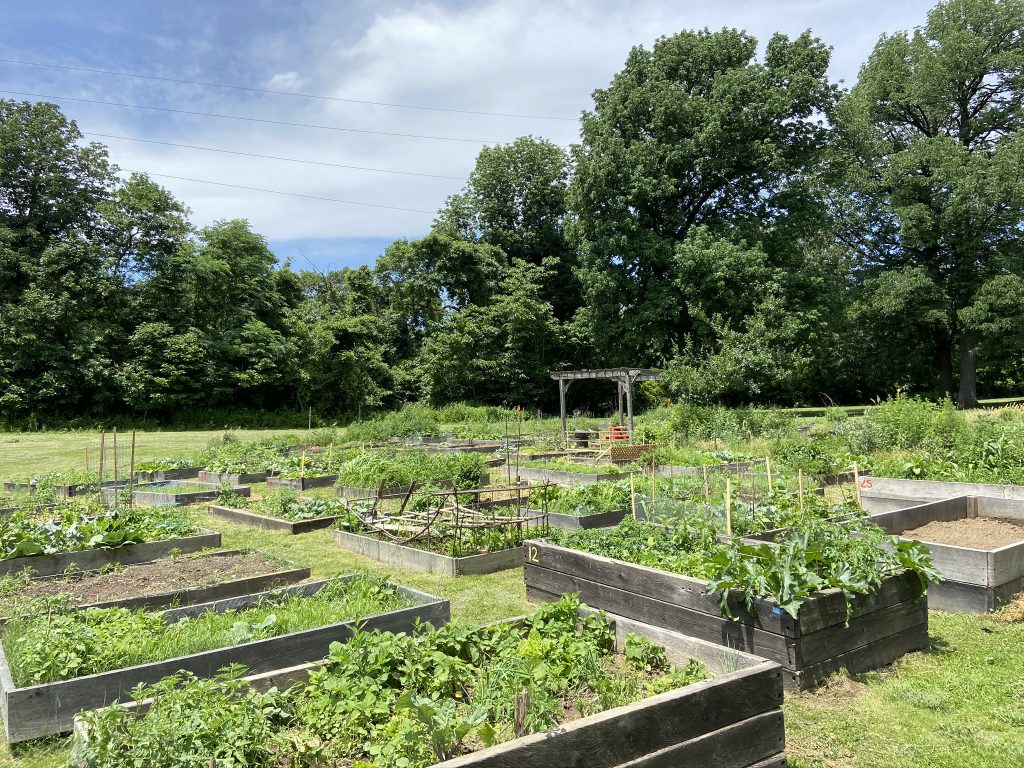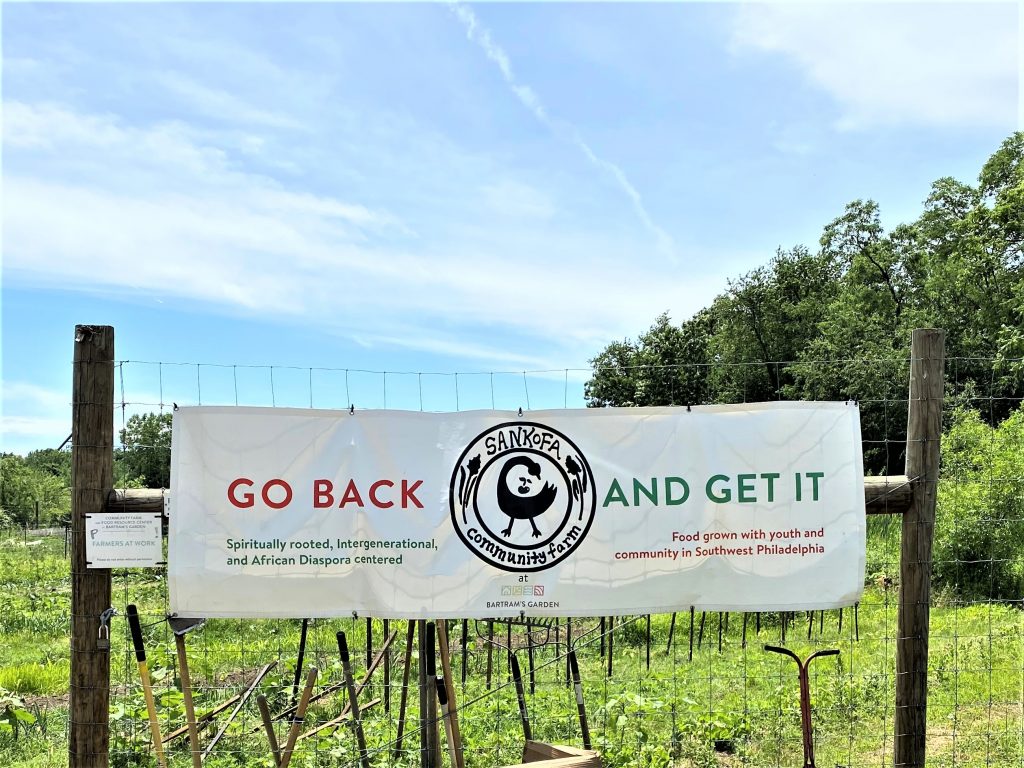One of America’s most historic gardens survives and thrives in Southwest Philadelphia today, preserving the legacy of pioneering colonial botanist John Bartram and partnering with the local neighborhood at a community-run farm. Visitors to Bartram’s Garden, a 45-acre National Historic Landmark run by the John Bartram Association and Philadelphia Parks & Recreation, can see historic buildings, trees, and plants at the country’s oldest surviving botanic garden, stroll trails by the Schuylkill River and take in city skyline views, and view the efforts of community gardeners. Located 5 miles from Center City’s more famous historic sites, the garden connects Philadelphia’s past and present, making it a special place for locals and visitors to explore the natural world and find inspiration in it.
The Bartram Family and Their Garden
Born to a Quaker family on a farm outside Philadelphia, John Bartram (1699–1777) had basic schooling but educated himself about the plants that fascinated him. Purchasing 100 acres south of Philadelphia in 1728 as a farm, he built the sturdy stone house that remains today. The garden Bartram began became a systematic plant collection as he traveled and gathered North American species not known to colonists and Europeans, who were thrilled by them. He developed a hugely successful business by collecting specimens and seeds and shipping them in specially designed boxes to England, eventually being appointed Royal Botanist by George III. Bartram was also a friend of Benjamin Franklin’s and a co-founder of the American Philosophical Society.
John’s son William Bartram (1739–1823) became a naturalist, writer, and artist whose internationally popular Travels, a classic work published in 1791, documented his explorations around the American Southeast. William and another son, John Jr., worked in the family plant business, and John Jr.’s daughter Ann Bartram Carr (1779-1858) and her husband continued the plant trade. Ann also opened part of the garden to the public for the first time. Financial pressures caused the garden’s sale in 1850, and eventually development threatened the famous site. Fortunately, a campaign to save it led the City of Philadelphia to take possession of Bartram’s Garden in 1891.
What to See and Do
Entrance to the gardens and grounds is free, with service here via the #36 trolley and parking available on-site. Bartram’s Garden is open daily; from April to early December, guided tours of Bartram House and a historic garden tour run Thursday to Sunday for a fee. Note: Although the grounds and trails are open, no tours or other public programs are scheduled, and the Welcome Center and Bartram House remain closed due to Covid-19 concerns; check the website and social media for updates. The garden is particularly beautiful in early spring and early summer when many plants are in bloom, and in fall when the trees blaze with color.
The House and Garden: The leafy heart of Bartram’s Garden, the naturalistic 8-acre historic garden showcases mainly native plants, flowers, and trees of eastern North America, including some of Bartram’s discoveries. It’s mostly a re-creation based on records and archaeology. Most plants aren’t labeled, but among the historic trees with markers is a magnificent gingko, the oldest in North America, dating to 1785. There’s also a Franklinia tree, a species (named for Benjamin Franklin) found by John and William Bartram in 1765 in Georgia and saved from extinction by the Bartram’s.
The historic garden and its winding paths extend from the house to the banks of the Schuylkill River. Bartram’s sturdy stone house, built in 1728 and remodeled over four decades to include Ionic columns and baroque carving around the windows, is as unique as the man himself. It contains period-appropriate furnishings and about a dozen items that belong to the Bartram family. Also near the house are the Welcome Center (currently closed), offering a map, tour tickets, and plants for sale; the striking two-level stone barn, built by John Bartram, Jr. in 1775; and the more formal Ann Bartram Carr Garden, with some historic roses.
The Meadow and Riverside Trails: The land that once held a 19th-century concrete factory is now a thriving riverside meadow with mowed and paved paths and the garden’s beehives. (The garden has been one site of the fall Philadelphia Honey Festival; 2020 plans are still being decided.) Besides stirring skyline views, the meadow is home to the Community Boathouse, used for the garden’s river programs (currently not available), and a public dock for boaters and anglers. Paths and boardwalks along the Schuylkill pass through forested areas and even a tidal wetland. The 1.1-mile Bartram’s Mile trail is part of the still-in-progress, 120-mile Schuylkill River Trail.
Sankofa Community Farm at Bartram’s Garden: The 3.5 acres of Sankofa Community Farm, operating for nine seasons, link the garden’s agricultural heritage with the food needs of modern Southwest Philadelphia. Local leadership, focused on community health, connection, and youth development in this under-resourced area, has established a teaching and production farm that distributes more than 15,000 pounds of food a year at a farmstand. Volunteers and paid high school interns learn about sustainability and the crops of the African and African American diaspora. The principle of Sankofa, related to “remembering,” reflects the farm’s African focus. It comes from a phrase in the Akan language of West Africa that means “it is not taboo to go back and fetch what you forgot.” Visitors can view the farm from outside but not enter the working area.
Near the farm, more than 50 community gardeners tend beds producing crops for their own use; there’s also a small orchard with tempting fruit. In addition, Sankofa helps local gardeners start vegetable gardens at their homes.
An urban river garden with an influential botanical legacy, Bartram’s Garden has survived as the city changed around it. The Bartrams’ entrepreneurship and spirit of discovery created a place that continues to inspire. The garden is part of a 300-year-old horticultural tradition in the Philadelphia area: to explore more in American’s Garden Capital, check out americasgardencapital.org for garden suggestions for all interests.
Side Dish: Scattered around Bartram’s Garden are tables for picnicking. For a treat, bring your own food and sit by the river or in a shady spot and enjoy the tranquility.
Linda Cabasin is a travel editor and writer who covered the globe at Fodor’s before taking up the freelance life. She’s a contributing editor at Fathom. Follow her on Instagram and Twitter at @lcabasin.

